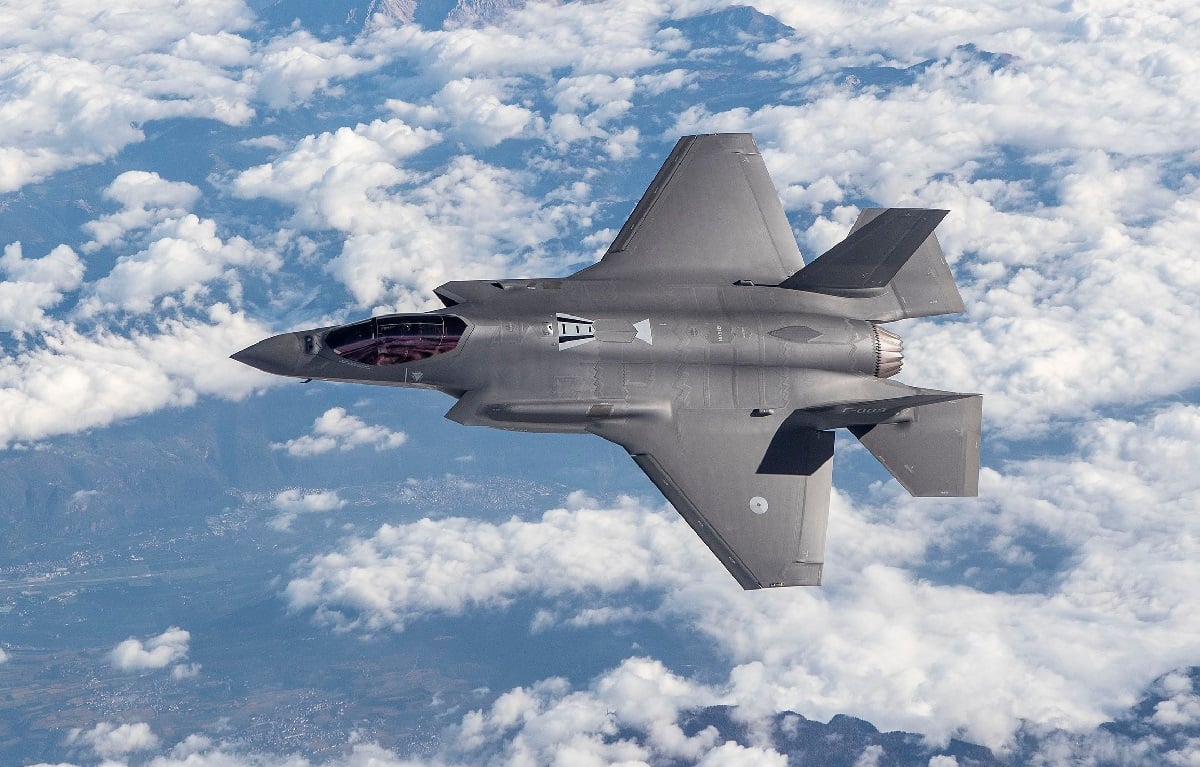
Why Does the F-35 Stealth Fighter Need a Gun? One Word: History
The Lockheed Martin F-35 Lightning II Joint Strike Fighter has been described as one of the most advanced combat systems in service anywhere in the world. In addition to its stealth capabilities, the all-weather, multirole, fifth-generation aircraft is a true warbird, and the F-35A conventional take-off and landing variant is armed with four internal stations as well as six external hardpoints on its wings with a capacity to carry 5,700 pounds internally, and 15,000 pounds externally.
The aircraft can be armed with a variety of air-to-air missiles including the AIM-120 AMRAAM, AIM-9X Sidewinder, AIM-132 ASRAMM and MBADA Meteor missiles; air-to-surface missiles including AGM-88G AARGM-ER and SPEAR 3 among others; and even the AGM-158C LRASM anti-ship missile. Additionally, a variety of Joint Direct Attack Munition (JDAM), Mk 77 incendiary, Mk 20 Rockeye II cluster and B61 mod 12 nuclear bombs can be carried.
The F-35A variant is also unique in that it is the only version of the Joint Strike Fighter that is armed with a built-in 25mm GAU-22/A four-barrel rotary cannon and 180 rounds of ammunition above its left air intake.
The F-35B and F-35C variants can carry the gun underneath the centerline depending on mission requirements. The question is that given the advanced missiles and bombs that the F-35 can carry, why is such a gun needed?
F-35A Gun and Stealth: A Needed Combo
That very question was addressed in a peer-reviewed research paper prepared by then Colonel Charles Moore, who has served as 57th Wing Commander in the United States Air Force and was manager for the Joint Strike Fighter/F-35 program on the Air Staff. His paper, The Need for a Permanent Gun System On the F-35 Joint Strike Fighter, noted, “some legacy weapons, such as an internal gun system, continue to prove they are still viable and are absolutely necessary if we want our future aircraft to have the flexibility necessary for the wide range of missions we expect them to perform.”
As Moore also stated, the issue to design, install and maintain such a gun system would not come without additional expense; while space and weight would remain significant details when designing the new aircraft. This helps explain why only the F-35A variant is equipped with an internal gun. The short takeoff and vertical landing (STOVL) F-35B variant requires space for its LiftFan, while the F-35C carrier variant needs to save weight and space to accomplish its long-range missions – but external guns can be mounted on both airframes as the mission dictates.
F-35A Gun: What History Tells Us
Another consideration, as reported by Business Insider, is that even in an era where advanced aircraft such as the F-35 can hit targets miles away before an enemy aircraft could even see the fighter approaching, pilots still want them. That comes from lessons learned in Vietnam when the McDonnell Douglas F-4 Phantom II was initially designed without an internal cannon. The thinking at the time was that longer-range air-to-air missiles such as the AIM-7 Sparrow would make close-in aerial dogfights a thing of the past.
However, when U.S. aviators came up against MiG-19 and MiG-21 they found they wished they had some guns for the close-in fighting, and later models of the Phantom II were armed accordingly.
The same line of thinking still holds true today, if an enemy fighter can get in close enough to shoot its guns, the F-35 better have a way to shoot back. And while the F-35 may only have enough ammunition – the aforementioned 180 rounds – to fire a short burst, it could be enough to make the difference in surviving a fight.
As Moore added, “a gun system is a reliable, low cost, small logistical footprint system that offers effects unachievable by other weapons. Not including such a weapon would not only be imprudent but would potentially prevent the F-35 Lightning II from achieving many of the missions it will be expected to perform late into the 21st century.”
In other words, the GAU-22/A four-barrel rotary cannon should be seen as a weapon of last resort – something no pilot ever wants to count on, but will certainly be glad it was there for those times when it was truly needed.
Peter Suciu is a Michigan-based writer who has contributed to more than four dozen magazines, newspapers and websites. He regularly writes about military small arms, and is the author of several books on military headgear including A Gallery of Military Headdress, which is available on Amazon.com.


